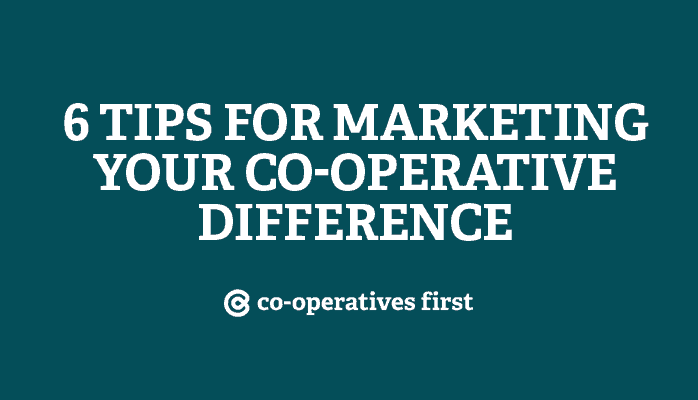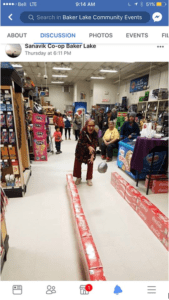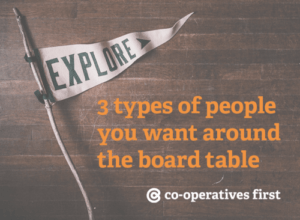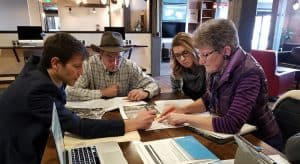Co-operative News once talked to marketing leaders from the co-op sector about marketing your co-operative difference. The responses both provided insight and reflected a few themes. In this post, we explore these themes and talk a bit about how you can use these insights for your own co-op.
Show don’t tell your co-operative difference
This is by far and away my favourite bit of advice. If you take nothing else from this article, I would recommend thinking about this one. All the other insights feed into this one and support a show-don’t-tell strategy.
In short, a show-don’t-tell strategy suggests you be your difference, not just talk about being different. This is simple, but deceptively challenging, advice. At Co-operatives First, we’re working to get better at this every day. It takes work and time — there’s no template for being authentic, nor is there a step-by-step guide to having the confidence to be vulnerable.
In fact, it’s much easier to yammer on about oneself than it is to truly show who you are. The same is true your organizations — and your co-operative difference.

Frozen chicken bowling at Sanavik Co-op in Baker Lake, Nunavut. You will probably never find a better example of how to show your difference. Special thanks to Arctic Co-operatives Limited for the images.
Understand yourself (brand)
How can you get there? First, understand yourself. Exposing vulnerability – aka authenticity – to the world requires calculated risk. Invest time in reflecting on who you are. Recognize what drives you (vision) and why you do what you do every day (mission).
Next, communicate these to internal stakeholders. Make sure the whole organization knows and is committed to the organization’s vision and mission. Achieving this alignment internally is going to be a challenge – especially as a co-op. Don’t worry, the payoff will be worth it.
Once everyone is committed and going in the same direction, capturing and sharing who you are with people will be easy (or at least easier). MEC does an amazing job of this. So does FCL. Videos of mountain climbers in action or kids on playgrounds built through the Community Spaces program says a whole lot more about these two co-ops than they could possibly cover in an “About Us” blurb on a webpage.
Check out this great tool for increasing alignment with a group of people.
Focus on your impact
This also means showing impacts rather than telling people what you did. While it’s perhaps easier to describe what you do, take a picture and post it to social media, showing the impacts of the work you do every day or donations you’ve taken in creates an emotional connection to your audience.
This can be done in a variety of ways, of course. For us, it’s important to show stories our target audience might identify with. Sharing a story of how a small group of innovators in Alberta create an investment firm and help save a local shop from closing may inspire others to take their first step towards exploring an opportunity.
It’s also important for us to show the bylaw process for a group hoping to purchase a small but important business in interior BC. Or how fast the incorporation process happened for the very first daycare co-op in Alberta. These things impact the people involved and those around them, and the efforts of these folks lead to a better and flourishing rural Canada. That should be shared and celebrated.
RELATED
Food Forest and Learning Centre in Saskatchewan
Westlock Terminals in Westlock Alberta
Go the extra mile when marketing your co-operative difference
It’s important to think outside what’s easiest. For example, as a co-op you might donate to your local hospital foundation. Perhaps you take a picture of the big cheque, do some handshaking, and post an image or two on social media. Great! This tells people what you did and that’s better than not saying anything at all.
But what if instead you connect that cheque to the story of how “Jenny’s baby girl got a second chance at life” in part because of “the support of members/shoppers like you” and include pictures of the child, the machine that saved her life and the happy family. In this case, the impact and buy-in from members will be significantly stronger because of the show-don’t-tell strategy. You showed them how they gave back. It takes longer but it will be worth it.
Match the message to an audience
If you teach a person to fish, show the independence this creates. If you give a person a fish, then focus on the smile it creates. From there, figure out who in your target audiences these messages resonate with.
Creating independence will resonate with taxpayers and elected officials. If you need them to hear it, get that message in front of them.
For a broader audience, smiles resonate with anyone with a heart. But you need to reach those with the means to donate. This is a more specific audience. Tailor the message and media channels to suit.
A great way to understand your target market is through creating personas.
Choose benefits over features
Benefits and features are two key (and well-known) parts of any sales or fundraising strategy. What’s the difference and how does show-don’t-tell fit in? Let’s explore this through an example.
Perhaps you sell windows. The window you’re selling might open with a crank, have an incredible R value and a great warranty. All good things. But the fact the window will keep a home warm and not howl during a winter storm offers far greater emotional value. Benefits, like impacts, are understood intuitively. Features require a rational and thinking.
With benefits you do the hard work of bringing the audience to your product or service — your co-operative difference. With a feature you make your audience do the hard work of figuring out how the product or service benefits them. Both have their place, but the benefits should come first.
Quick recap
First, know who you are. Knowing who you are means knowing where you’re going and why.
Next, outline who needs to know about who you are. Identifying your target market and understanding their characteristics will help you focus on what matters to them.
Third, understand why those who need to know about you should care about who you are. Recognizing and understanding your audience will better align your message and increase the likelihood of a positive reception for your co-operative difference.
Finally, figure out the best way to capture and share this you with those who should know about you. Good luck out there! If you want to chat about this or anything else you read on this site, contact us.





